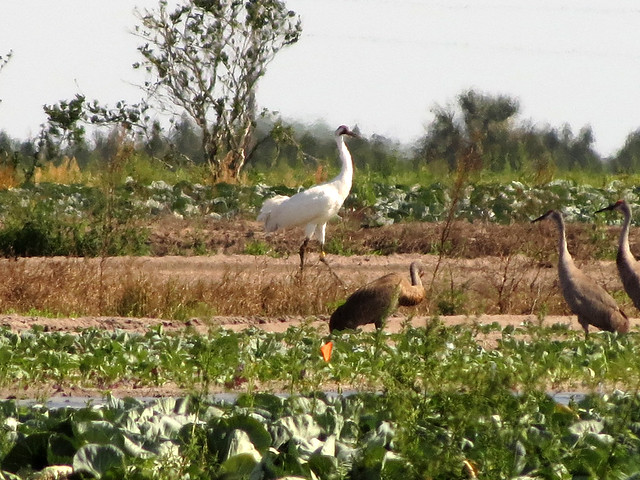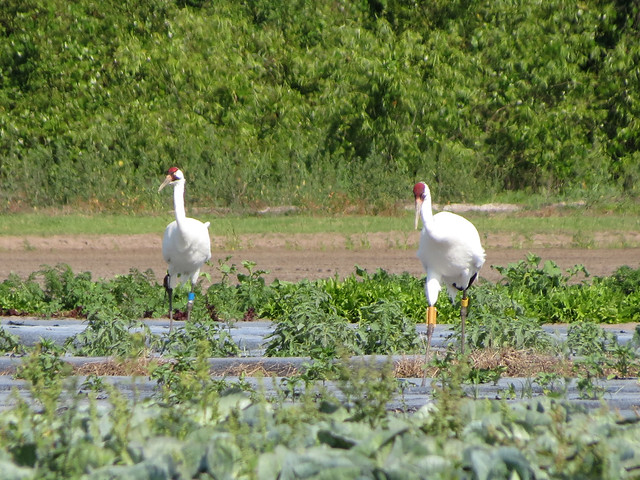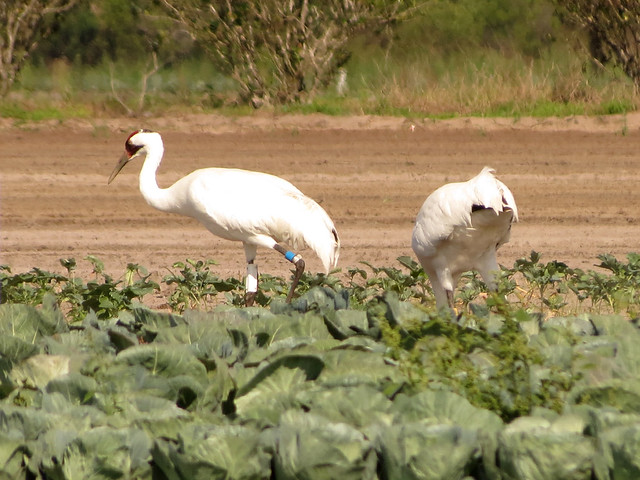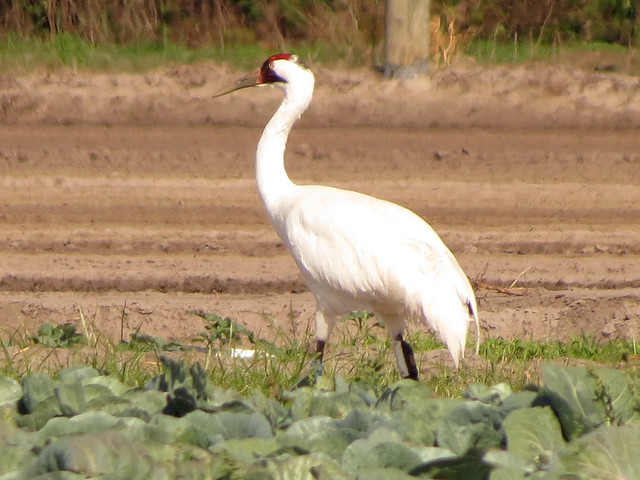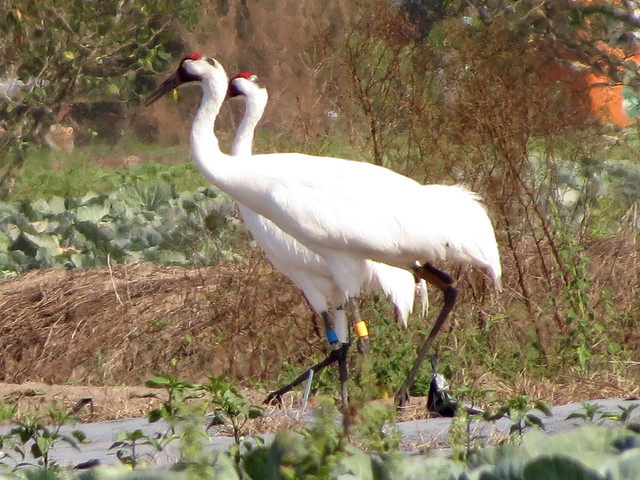Birding Gemini Springs, March 2012
I completed 11 eBird checklists for Gemini Springs in March, recording a total of 66 species. Nine of these were new for the year (bold indicates new to my all-time Gemini Springs list): Wood Duck; Wild Turkey; Sora; Black-necked Stilt; Barred Owl; Marsh Wren; Prairie Warbler; Swamp Sparrow; and American Goldfinch. The complete list of 66 birds is at the end of this post.
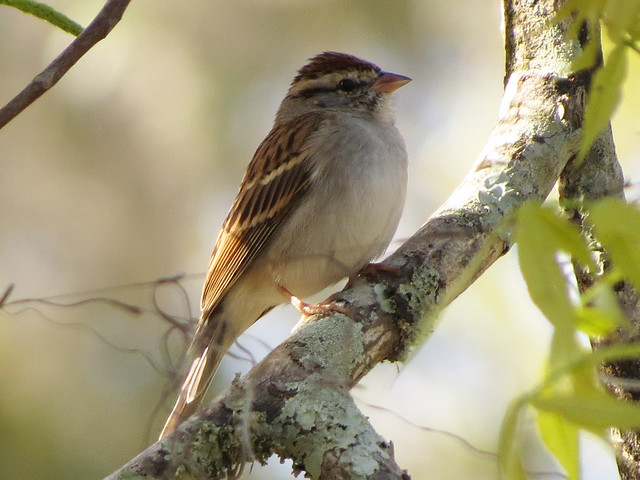
Chipping Sparrow; March 6 2012

Anhinga; March 9 2012
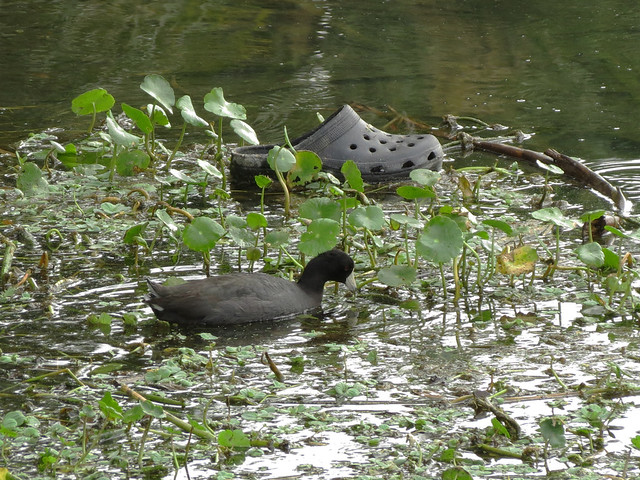
An American Coot swims dangerously close to a croc; March 9 2012
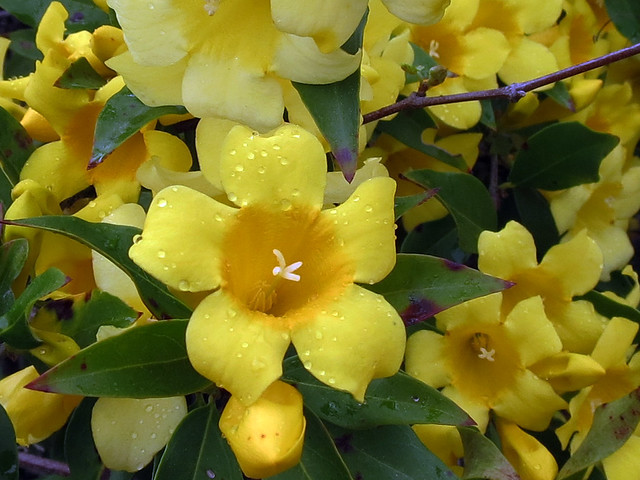
Extremely fragrant flowers (sorry I don’t know the species); March 9 2012
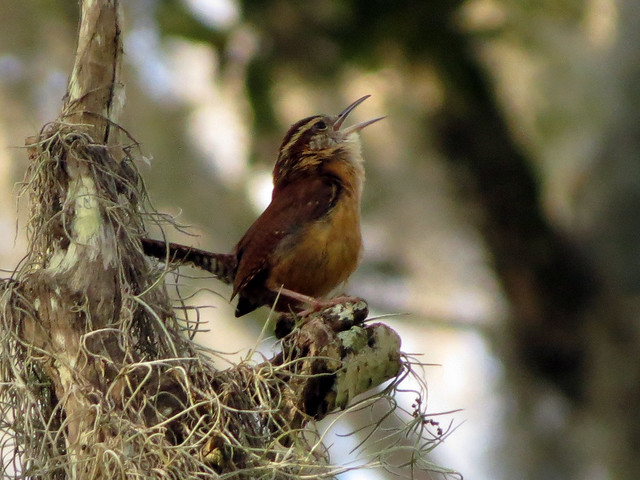
Singing Carolina Wren; March 12 2012
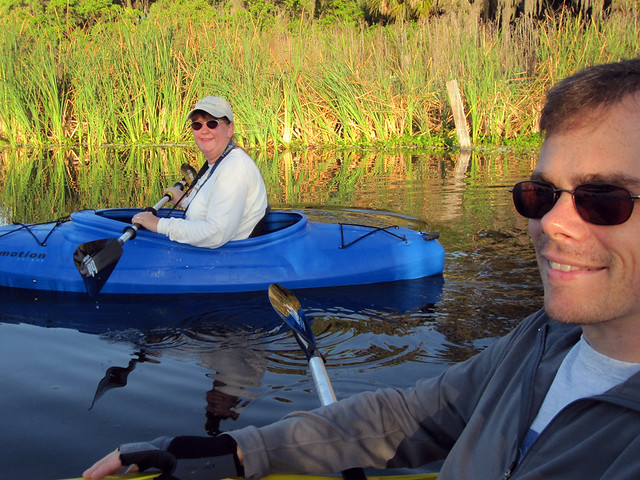
Kayaking in DeBary Bayou; March 16 2012

A large group of children visiting Gemini Springs; March 16 2012
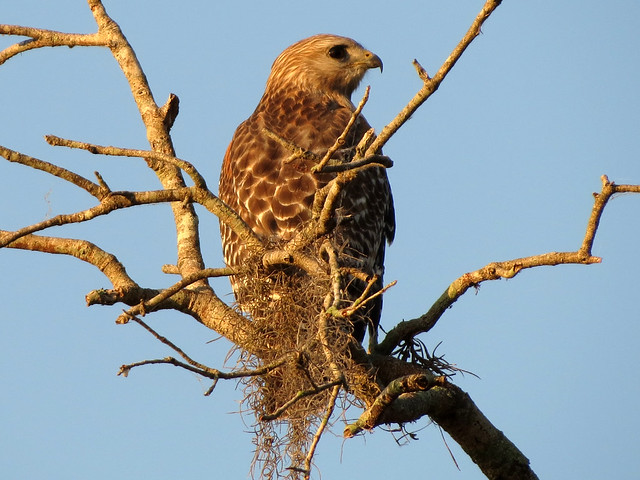
Red-shouldered Hawk; March 19 2012
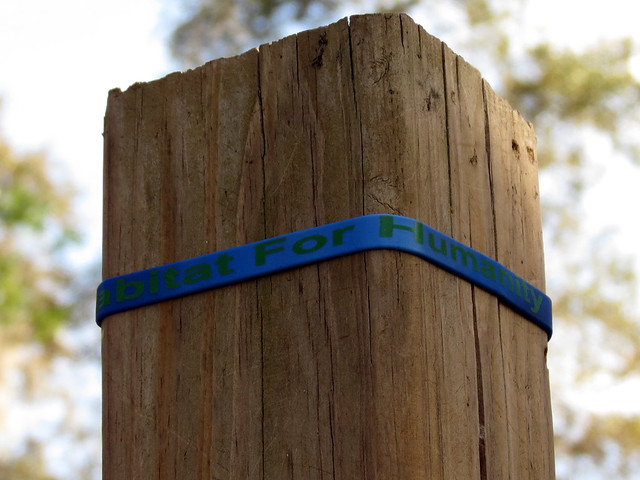
Habitat for Humanity wristband I found on the ground & placed around a post; March 20 2012
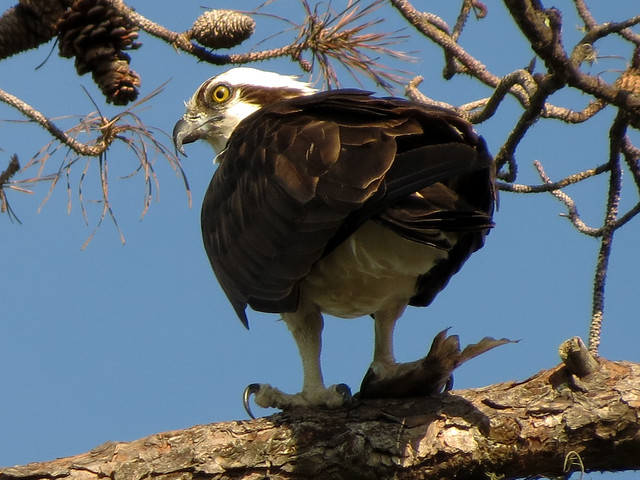
Osprey; March 20 2012
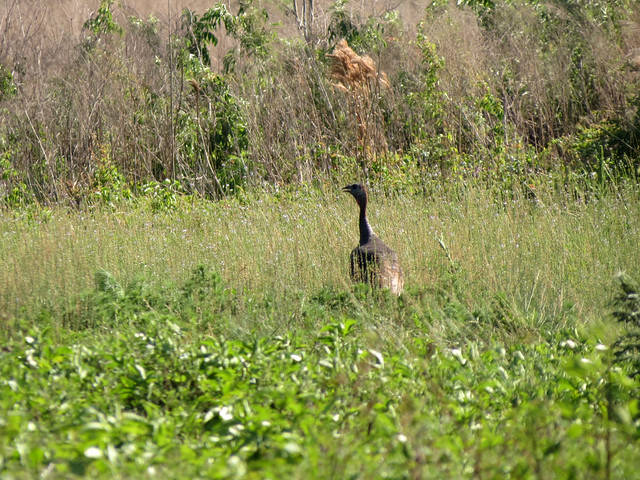
A lone Wild Turkey; March 25 2012
![Southern Black Racer [maybe]](http://farm8.staticflickr.com/7050/6894692750_b58c29b3b0_z.jpg)
Southern Black Racer (I think); March 25 2012
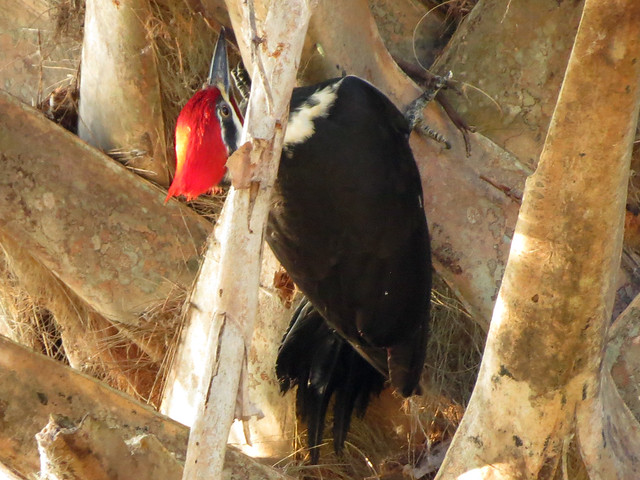
Pileated Woodpecker working around a palm trunk; March 27 2012
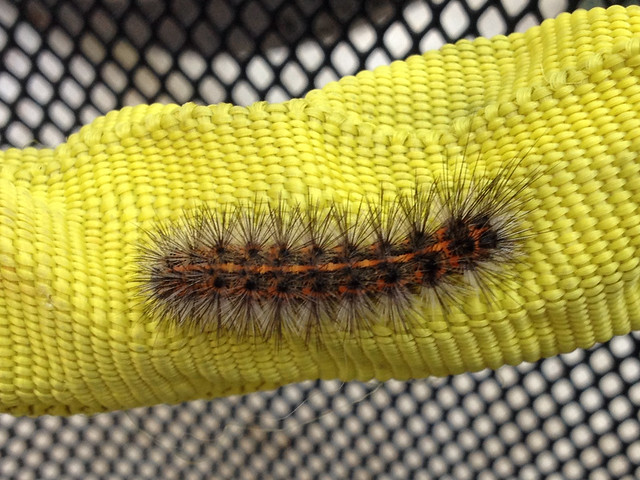
A type of webworm or tent caterpillar (I think); March 27 2012
March 2012 bird list, Gemini Springs
Wood Duck – Aix sponsa
Blue-winged Teal – Anas discors
Wild Turkey – Meleagris gallopavo
Pied-billed Grebe – Podilymbus podiceps
Wood Stork – Mycteria americana
Double-crested Cormorant – Phalacrocorax auritus
Anhinga – Anhinga anhinga
American Bittern – Botaurus lentiginosus
Great Blue Heron – Ardea herodias
Great Egret – Ardea alba
Snowy Egret – Egretta thula
Little Blue Heron – Egretta caerulea
Tricolored Heron – Egretta tricolor
Cattle Egret – Bubulcus ibis
Green Heron – Butorides virescens
White Ibis – Eudocimus albus
Glossy Ibis – Plegadis falcinellus
Black Vulture – Coragyps atratus
Turkey Vulture – Cathartes aura
Osprey – Pandion haliaetus
Bald Eagle – Haliaeetus leucocephalus
Red-shouldered Hawk – Buteo lineatus
Red-tailed Hawk – Buteo jamaicensis
Sora – Porzana carolina
Common Gallinule – Gallinula galeata
American Coot – Fulica americana
Limpkin – Aramus guarauna
Sandhill Crane – Grus canadensis
Killdeer – Charadrius vociferus
Black-necked Stilt – Himantopus mexicanus
Forster’s Tern – Sterna forsteri
Mourning Dove – Zenaida macroura
Barred Owl – Strix varia
Belted Kingfisher – Megaceryle alcyon
Red-bellied Woodpecker – Melanerpes carolinus
Yellow-bellied Sapsucker – Sphyrapicus varius
Downy Woodpecker – Picoides pubescens
Pileated Woodpecker – Dryocopus pileatus
Eastern Phoebe – Sayornis phoebe
White-eyed Vireo – Vireo griseus
Blue Jay – Cyanocitta cristata
American Crow – Corvus brachyrhynchos
Fish Crow – Corvus ossifragus
Tree Swallow – Tachycineta bicolor
Carolina Chickadee – Poecile carolinensis
Tufted Titmouse – Baeolophus bicolor
Carolina Wren – Thryothorus ludovicianus
Marsh Wren – Cistothorus palustris
Blue-gray Gnatcatcher – Polioptila caerulea
Ruby-crowned Kinglet – Regulus calendula
Gray Catbird – Dumetella carolinensis
Northern Mockingbird – Mimus polyglottos
Cedar Waxwing – Bombycilla cedrorum
Black-and-white Warbler – Mniotilta varia
Orange-crowned Warbler – Oreothlypis celata
Common Yellowthroat – Geothlypis trichas
Northern Parula – Setophaga americana
Palm Warbler – Setophaga palmarum
Yellow-rumped Warbler – Setophaga coronata
Prairie Warbler – Setophaga discolor
Chipping Sparrow – Spizella passerina
Swamp Sparrow – Melospiza georgiana
Northern Cardinal – Cardinalis cardinalis
Red-winged Blackbird – Agelaius phoeniceus
Boat-tailed Grackle – Quiscalus major
American Goldfinch – Spinus tristis



